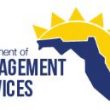Harris receives plaudits from state of Florida, local agencies about SLERS during Hurricane Michael
Florida’s Statewide Law Enforcement Radio System (SLERS) built by Harris remained operational throughout Hurricane Michael and the storm’s aftermath, earning Harris commendations from a key state official.
In a letter to Harris CEO William Brown, Matthew Matney—chief of public safety for the state of Florida Department of Management Services (DMS) telecommunications division—applauded the Harris SLERS team, which “represented [Harris] very well in one of the most adverse natural-disaster situations possible, and I wanted you to know that I feel confident that we can count on them to assist us in critical events in the future.”
Matney noted that Hurricane Michael made landfall in northwest Florida on Oct. 10 as a Category 4 hurricane that almost qualified as a Category 5 storm, causing most counties in the area to lose local communications systems, with some seeing their LMR tower sites fail as a result of the high winds. Lacking communications hampered public-safety response efforts, but that was not a problem for agencies that subscribed to SLERS, according to Matney.
“It should be noted that the SLERS system remained operational in the region during the hurricane, and only a few tower sites required significant repair afterward to return to operation,” according to Matney’s letter. “Those tower sites were repaired by Harris and its subcontractors in record time, and the system became completely operational within 96 hours of the hurricane landfall.”
A.J. Smith, sheriff of Franklin County, Fla., echoed this sentiment.
“We had communications during Michael, and it was good,” Smith said during an interview with IWCE’s Urgent Communications.
“We had 100-plus miles-per-hour winds. I stayed here for the storm—as all of our deputies did—and we didn’t lose communications. When the storm was getting close and the weather conditions were really bad, I got on the radio and told everybody to hunker down and find their safe spot. That’s what they did until the storm passed, and the radio enabled us to do that [transmit and receive those communications].”
Steve Williams, director of the Harris SLERS system and a former official for the Florida highway department, said the key reasons that SLERS remained operational when other radio systems failed was that the network infrastructure was hardened and that backhaul from tower sites uses private microwave links that are not dependent upon telco landline systems, many of which failed during Michael.
“We lost no structural steel, even though we had one tower twist 18 degrees, due to the guy-wires having trees thrown up on them, but the tower stayed up,” Williams said during an interview with IWCE’s Urgent Communications. “We were able to get the trees off the guy wires, it untwisted itself, and then it was just a matter of realigning. We were very fortunate in that regard.
“One of the key things about SLERS is that SLERS doesn’t rely on telco for backhaul—telco didn’t exist in a lot of these areas, including cellular. So, [SLERS backhaul] is microwave, with path diversity. The very night that the storm was exiting Florida, we were already at our first site, realigning the microwave that was on the backbone.”
Even when backhaul was lost, agencies that subscribe to SLERS were able to talk locally, because towers continued to support communications by automatically functioning as repeaters, Williams said.
“The system held up once again,” he said. “This was the 12th storm that SLERS has been exposed to, but it was built for this this kind of stuff.”
Critical to the Harris effort to restoring backhaul and maintaining generators was the fact that so many responding to the Hurricane Michael disaster—both full-time Harris employees and personnel associated with the company’s dealers—live in the affected area, Williams said.
“The biggest thing is that, of the 118 people I had staged in teams, 46 people actually were in the community, leaving their homes and responding to the restoral efforts—not only for SLERS but for these other entities that needed communications,” Williams said. “These guys had to leave their homes, live in adverse conditions that the normal person wouldn’t live in—whether that’s sleeping in their vehicle or sleeping in a shelter—just to get the mission done. That’s why we were able to get it done so quickly.”
Williams said that trying to address such communications issues from outside the affected area often is not practical.
“Part of the problem post-hurricane is that access to roads is a huge problem; the state has to prioritize which routes it will clear first,” Williams said. “Having pre-positioned assets around the state—and we’re part of the community, so we’re in these locations already—is huge to being able to respond quickly. If you’re out of the state and completely out of the hurricane zone, you can try to bring a caravan in later on. While it certainly is helpful, it’s not going to be as timely and responsive as having pre-staged assets—both in terms of equipment and people—in the locations that you know you are need it.
“When hurricanes come through, antennas are going to blow off of the tower—that’s just going to happen, you can’t prevent that. You need to have somebody who can climb the tower quickly, realign a microwave antenna and get things in their spots, so that the system stays on the air within hours of the hurricane blowing through—not days.”
Despite the performance of the SLERS system—an LMR network that utilizes proprietary EDACS technology from Harris—during Hurricane Michael, the Harris contract with the state of Florida is slated to expire in 2021. Earlier this year, Florida DMS selected Motorola Solutions to build a new statewide P25 radio system, and an administrative law judge recently dismissed the Harris protest of the decision.
Max Green, vice president of sales for Harris, said he hopes the Hurricane Michael episode will cause state officials to reconsider whether they want to replace the existing SLERS system with an entirely new network.
“Steve [Williams] and his team … knocked it out of the ballpark yet again,” Green said during an interview with IWCE’s Urgent Communications. “The state has enjoyed this [SLERS] for well over a decade. Twelve hurricanes have come through, and they’ve been able to get the type of responsiveness that they would expect.
“It’s crazy to think that replacing this with a third less sites for an exorbitant amount of money—much more than it would take to refresh the current system that is already in place and has performed admirably—is in the best interest of the state and for all of its users.”
Green said that state officials should consider an approach not allowed in the P25 bid, which was a refresh of the existing SLERS system with the installation of P25 technology.
“Steve and his team have done a tremendous job; we’d love to keep doing it,” Green said. “Refreshing the phenomenal system that they’ve already got with the new P25 technology is clearly the easiest thing to do—the state’s happy, the communities are happy, and it can be done for a whole lot less money, with the same level of reliability and redundancy that they’ve already got.
“We’re hoping the state and the rest of its users will continue to see the light on that and continue to work with us for the next hurricane and all of those in the future.”

















